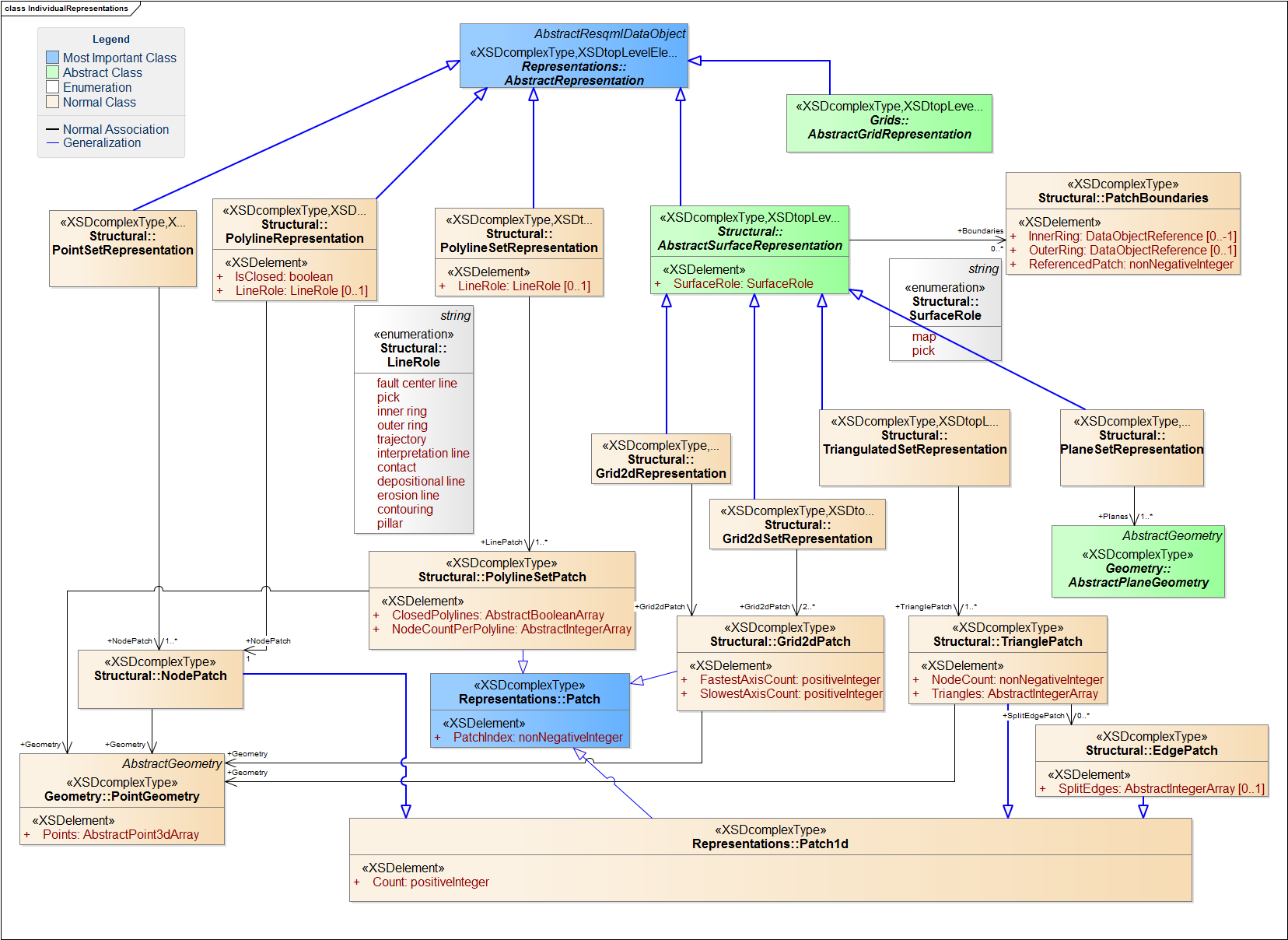10.2 Individual Representations
| Topic Version | 1 | Published | 09/11/2015 | |
| For Standard | RESQML v2.0.1 | |||
Individual representations (which all inherit from abstract representation) are defined by their topology and their geometry. Individual representations may be based on either:
- A discrete definition of the geometry
- A parametric description of the geometry using parametric line descriptions
For discrete representations, the node is the elementary topological atomic element used for each individual representation based on a discrete geometry. Mainly each individual representation contains its topology, which defines how to associate these nodes to represent the individual representation as points, lines, surfaces or volumes.
The topological relationships within a representation may either:
- Explicit: For example, a triangle patch, where we must define the node number of the points that are linked together to make up a triangle.
- Implicit: For example the index of each node is given only by its order in the array of 3D points of the point geometry (most of the cases).
Non-discrete representations, such as an infinite plane, are also available.
The UML model in EA is organized as shown in Figure 10.2-1 and explained in the sections below the figure.
